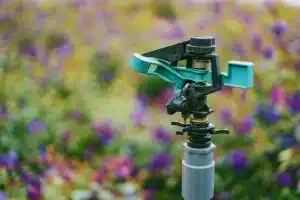A beautifully manicured lawn is a sight to behold, and it’s not just about aesthetics. A well-maintained lawn also contributes to a healthier environment by absorbing carbon dioxide and providing oxygen. At the heart of this green oasis is the humble sprinkler system, but don’t be fooled by its simplicity; there’s science at play here.
The Mechanics of Sprinklers
Sprinkler systems operate on a basic yet ingenious principle. They consist of a network of pipes, valves, and sprinkler heads. When you turn on your sprinklers, water flows through these pipes and is released through the heads. But what makes this process so effective is the design of the sprinkler heads.
Pop-Up Sprinkler Heads: These are common in residential systems. They pop up when activated and disperse water in a fan-like pattern.
Rotary Sprinkler Heads: These rotate while spraying water, covering a larger area with a gentle rain-like effect.
The mechanics ensure that water is evenly distributed across your lawn, preventing overwatering in some areas and underwatering in others.
Understanding Water Distribution
Efficient water distribution is where science plays a crucial role. The rate at which water is applied and the volume it covers depend on various factors:
- Water Pressure: The force at which water is delivered affects the range and coverage of the sprinklers.
- Nozzle Size: Different nozzle sizes control the droplet size, affecting the spread of water.
- Sprinkler Placement: Proper spacing and placement of sprinkler heads are essential for uniform coverage.
Getting these factors right ensures that every inch of your lawn receives the right amount of hydration.
Efficiency and Water Conservation
Sprinkler systems are not just about keeping your lawn green; they also contribute to water conservation. Here’s how:
- Timing: Set your sprinklers to run during the early morning or late evening to minimize water loss due to evaporation.
- Rain Sensors: These nifty devices can detect rain and prevent your sprinklers from running unnecessarily.
- Smart Controllers: Modern sprinkler systems can be programmed and adjusted remotely, allowing you to optimize watering schedules based on weather conditions.
Choosing the Right Sprinkler System
The science of sprinklers extends to choosing the right system for your lawn. Factors like lawn size, shape, and water pressure all play a role in selecting the most suitable sprinkler system. At Utah Sprinkler Company, we specialize in tailoring systems to meet these specific needs, ensuring optimal performance.
The Impact of Climate
The local climate has a significant impact on your sprinkler system’s effectiveness. Understanding the weather patterns in your area is vital for efficient watering. Whether you’re dealing with scorching summers or frosty winters, your sprinkler system can be adjusted to adapt.
Conclusion
In conclusion, sprinkler systems are not just a convenience; they are a scientific marvel that helps maintain your lawn’s lushness efficiently. Understanding the mechanics, water distribution, and the role of technology in water conservation can make a significant difference in the health of your lawn and the environment.
For expert guidance on sprinkler system installation, maintenance, and optimization, turn to Utah Sprinkler Company. We’re not just experts; we’re passionate about the science of sprinklers. Contact us today to ensure your lawn stays beautifully lush. Visit our website here or call us at 801-692-7315.




